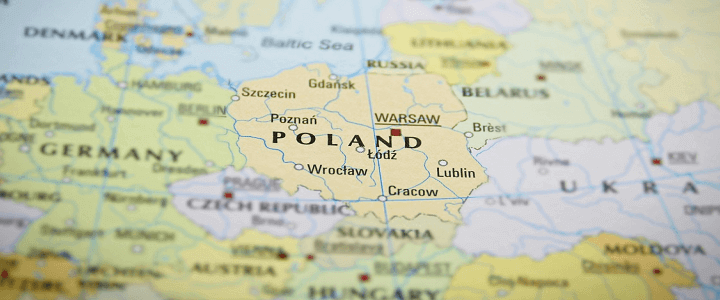Tuesday morning, President Donald Trump departed Washington for the NATO summit in Brussels (which will be a depressing place to be since Belgium just lost to France in the World Cup). While the president is focused on whether or not NATO member countries are spending the agreed-upon two percent of GDP on defense, a larger strategic decision on forward stationing is looming.
NATO troops currently rotate through Poland and the former “captive nations” of Latvia, Lithuania, and Estonia as part of NATO’s Enhanced Forward Presence program. The government of Poland, which lived behind the Iron Curtain from 1945 to 1989 and is tired of being the battlefield sandwiched between Russia and Germany, wants the U.S. to station an entire armored division there permanently.
Back to the future
Since the end of the Second World War, the U.S. has had Soldiers and Airmen forward stationed in Germany. During the Cold War, they were NATO’s first line of defense against a Soviet-led Warsaw Pact invasion. American troops guarding the Fulda Gap and other sectors along the border dividing East and West Germany spent more than two generations on the front lines of a war that never descended into actual combat, but was full of international tension.
After the fall of the Berlin Wall, the outbreak of democracy across Eastern Europe, and the collapse of the Soviet Union, the number of American troops in Europe declined steadily. At the height of the Cold War, the U.S. had four divisions — the 3rd and 8th Infantry, and 1st and 3rd Armored — plus two detached brigades from the 1st Infantry and 2nd Armored Divisions, and the 2nd and 11th Armored Cavalry Regiments stationed in Germany, and the Southern European Task Force in Italy.
Today that contingent is down to two brigade combat teams — the 2nd Armored Cavalry in Vilseck, Germany and the 173rd Airborne in Vicenza, Italy—and smaller supporting brigades. Poland wants to bump that by three armored brigade combat teams and a division headquarters.
And it’s willing to pay.
putting Russia in its place
Russian aggression across Eastern Europe and its direct actions in Georgia and Crimea has made the Polish government understandably nervous. In a document released in May, the government stated plainly, “Permanent U.S. troops in Poland will send a clear message to Russia of U.S. support for its Eastern European allies.”
Poland is already on Trump’s good side. It is one of the NATO countries that has met the goal of spending two percent of its gross domestic product on defense, and has been an enthusiastic participant in NATO operations. And proving that it understands its audience, the Polish government says it’s prepared to pay between $1.5 and $2 billion a year to get its division.
It warms this old Cold Warrior’s heart to see Europeans wanting U.S. troops on their soil, and it is especially gratifying to have Poland, whose capital, after all, gave its name to the “treaty” that formed the Soviet alliance, leading the charge. But is it really a good idea?
It might just be. For starters, Russian President Vladimir Putin, himself a product of the Cold War KGB, understands and respects strength more than anything. Three brigades on his western border could be seen as a threatening move, but they aren’t nearly sufficient to mount an invasion. They are, however, a powerful deterrent to Russian aggression.
Furthermore, since there is no way in the current climate for the U.S. to grow the Army by three brigades, any Polish contingent would have to come from existing units. Permanently stationing a division in Poland could potentially lead to another cost-saving round of base closures, or at least the downsizing of a current installation.
Poland has been an eager partner since its admission into NATO. Its proposal deserves serious consideration.




